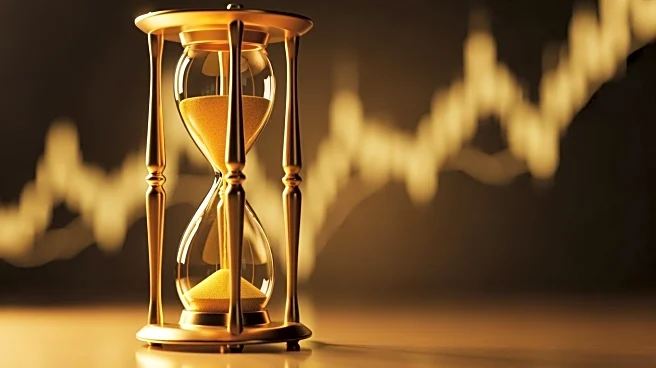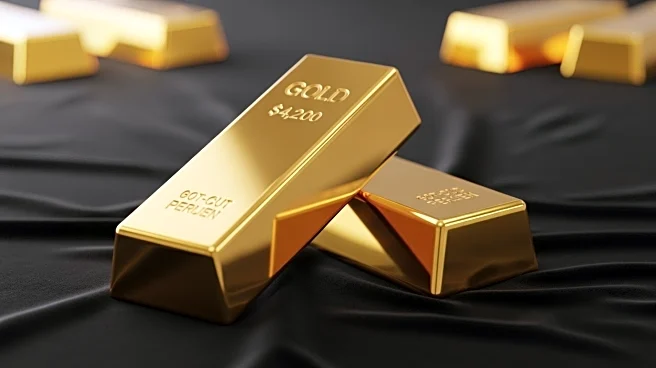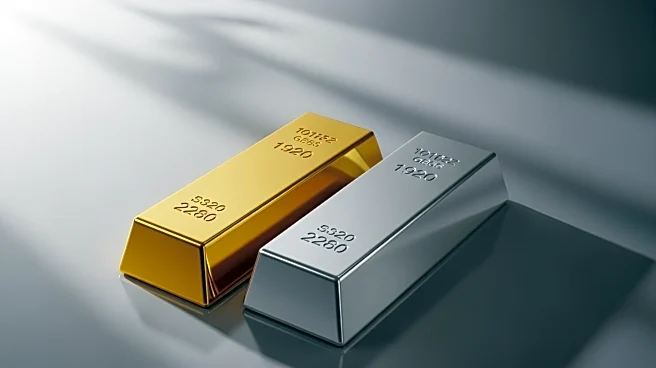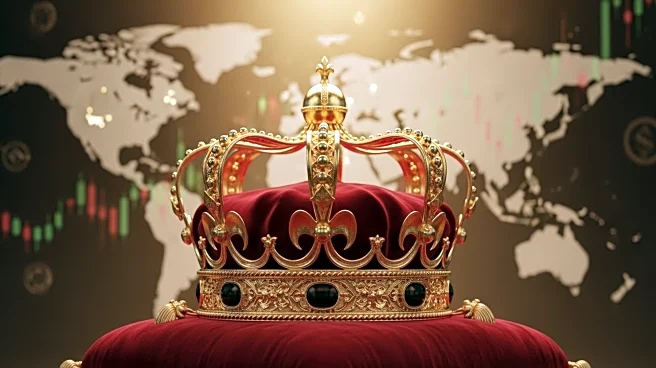What's Happening?
Gold prices have reached unprecedented levels, surpassing $4,300 per ounce, before settling around $4,210. This surge is attributed to a combination of factors including U.S.-China trade tensions, a prolonged
U.S. government shutdown, and expectations of Federal Reserve interest rate cuts. The metal has seen a significant increase of over 60% year-to-date, outpacing major stock indexes and cryptocurrencies. Investors are flocking to gold as a safe haven amid economic uncertainty, with markets anticipating a 0.25% rate cut by the Federal Reserve in the upcoming meetings.
Why It's Important?
The rise in gold prices reflects broader economic concerns and investor behavior in times of uncertainty. As a non-yielding asset, gold becomes more attractive when interest rates are low, reducing the appeal of bonds and the dollar. This trend indicates a lack of confidence in traditional financial markets and a shift towards safe-haven assets. The implications are significant for investors and policymakers, as sustained high gold prices could signal ongoing economic instability and influence monetary policy decisions.
What's Next?
The Federal Reserve's upcoming decisions on interest rates will be closely watched, as further rate cuts could continue to support gold prices. Additionally, any developments in U.S.-China trade relations or changes in the U.S. government's fiscal policies could impact investor sentiment and gold's trajectory. Analysts are divided on whether the rally will continue or if a correction is imminent, with some predicting prices could reach $5,000 per ounce in the near future.
Beyond the Headlines
The current gold rally highlights the complex interplay between geopolitical tensions, economic policy, and market psychology. It underscores the role of gold as a barometer for economic health and a hedge against uncertainty. The situation also raises questions about the sustainability of current economic policies and the potential for long-term shifts in global financial markets.











